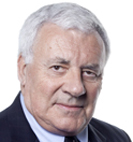With up to half a million amateur chief investment officers in more than one million SMSFs running more than $550 billion of assets in Australia, there’s no shortage of people offering investment advice. But the chances are many trustees are offered well-meaning, generic advice, which may not be well-timed for their specific SMSF.
Perhaps the best, basic advice for SMSF investors is to “know yourself” – as in knowing your investment style. This goes beyond what normally comes under the heading of style: it’s not about value versus growth investing or the advantages of technical versus fundamental analysis. Rather it’s about how an investor plays the game of share investment.
The rules of the game
Yes, game. Way back last century John Maynard Keynes described the stock market as a game (like snap or musical chairs). That’s still so, though now it’s perhaps more like tennis. Think of the difference between amateur and professional tennis players. The amateur’s main aim is defensive; to keep the ball in play by avoiding errors. The professionals, however, are aggressive; they try to hit winners and will risk hitting close to the sidelines and baselines.
The same applies to amateur versus professional investors.
Amateurs may lack some skills and thus the confidence to play an aggressive game and most – especially SMSF investors – are loss averse: their pain from losses is often twice as great as the pleasure from profits. This is magnified the closer they get to retirement, but there is more than psychology involved: avoiding losses also makes good sense.
Warren Buffett recognised this with his two investment rules. He says the first rule in investment is ‘don’t lose money’ and the second rule is ‘don’t forget the first rule.’ In the GFC downturn, when the S&P/ASX 200 index fell 49% between September 2007 and January 2009, an investor fully invested in the index shares needed a 96% rise in the index to recover their original position. As it turned out, that recovery took six years. That’s assuming the investor remained 100% invested in shares; if they reacted to the losses and sold some shares, it would have taken longer.
Right now, many SMSFers looking at the share market will be feeling confused: there is no shortage of reasons to remain bullish, while at the same time nagging doubts – now, including, international hostilities – keep emerging.
Not to mention some widely varying predictions for some key economic factors –like the exchange rate. As Peter noted on Saturday, forecasts on the $A can be quite polarised; you can take your pick between parity with the $US this year or 85c in December and 80c in December 2015.
In reality, no one knows what will influence the share market, let alone when. Investors can only make their best guess and then assess how much pain they can absorb if markets retreat – and whether they have the diversification and the patience to ride out the worst-case scenario.
Of course, most investors want to achieve long-term growth and that means seeking winners on the share market. But, as in the game of tennis, if they are tempted always to hit winners, it’s important to remember the limitations in their game and not let the ideas of growth obscure the other side of any strategy – mitigating losses.
When markets are bubbling it’s easy to be tempted and lose sight of Warren Buffett’s rule. After all, it’s much more exciting picking winners. But another investment great – Paul Samuelson who won the Nobel Prize for economics in 1970 – had this advice for the thrill seekers: “Investing should be like watching paint dry or grass grow. If you want excitement take [some money] and go to Las Vegas.”
Important: This content has been prepared without taking account of the objectives, financial situation or needs of any particular individual. It does not constitute formal advice. Consider the appropriateness of the information in regards to your circumstances.
Follow the Switzer Super Report on Twitter
Also in the Switzer Super Report:
- Peter Switzer: How worrying is Iraq for stocks?
- Paul Rickard: Chasing yield – AMPs Corporate Bond Fund
- Tony Featherstone: The best stock ideas for the next five years
- Rudi Filapek-Vandyk: Buy, Sell, Hold – what the brokers say
- Gary Stone: A$ continues to show strength
- Staff Reporter: Property engine starts to rev again

